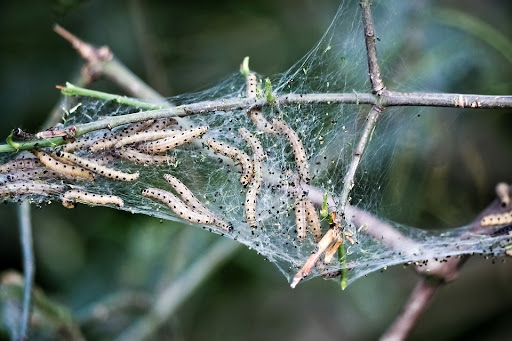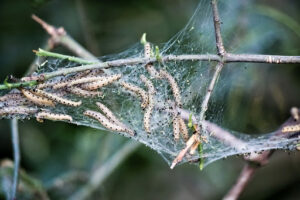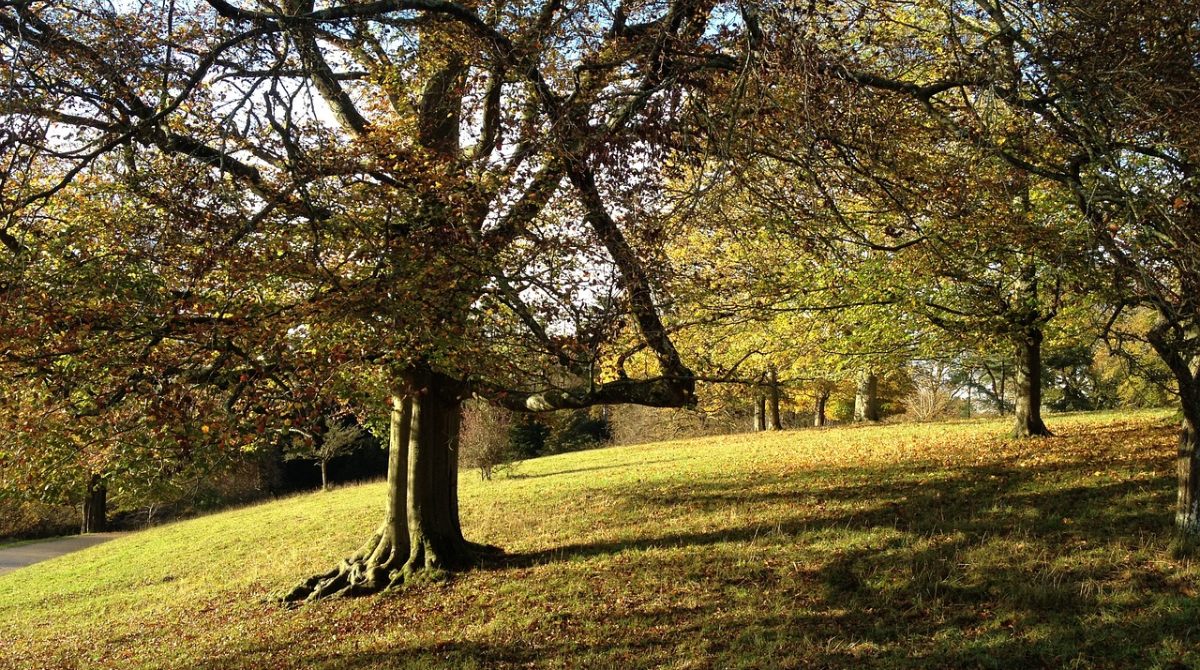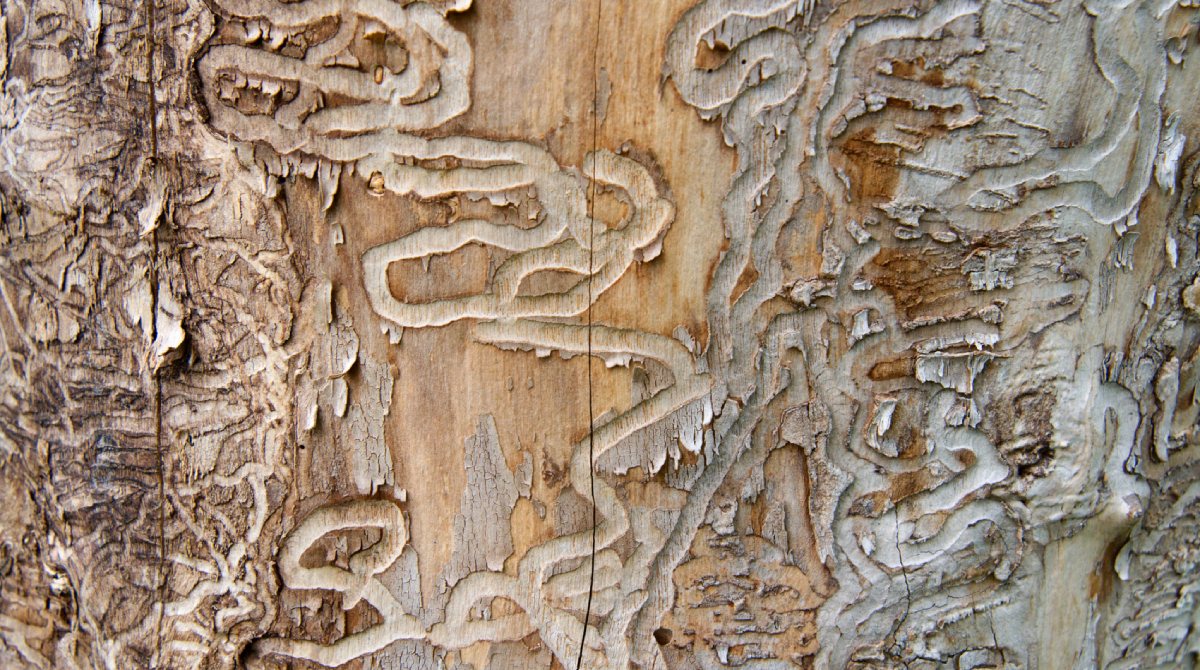
Tree Tent Caterpillars
Date April 21, 2023
While individual caterpillars might appear cute, a mass of caterpillars infecting plants can be destructive. They form from eggs laid in the summer, overwintering and hatching in the spring. If left untreated, these caterpillars can defoliate entire trees and stunt the trees’ growth.
What Are Tent Caterpillars?
Image via Pixabay by 652234
Tent caterpillars aren’t a specific type of insect; rather, this phrase encompasses the larvae of all different types of moths and butterflies found within the Malacosoma genus. Across the globe, more than two dozen species of tent caterpillars exist with approximately six found in the United States. Three of the most common include the following:
- Eastern Tent Caterpillars: Typically found east of the Rockies, full-grown caterpillars are about 2 inches long and are hairy. They’re black with a row of pale blue spots on each side along with a white stripe down their back. Host plants are usually fruit trees, but they also use shade trees.
- Forest Tent Caterpillars: Found throughout the country wherever hardwood trees exist, these caterpillars have white spots running down their backs and not a solid line. Host plants include aspen, hawthorn, maple, oak, and wild cherry.
- Western Tent Caterpillars: Located in the northern and western parts of the United States, these hairy caterpillars are yellow-brown with rows of blue spots on their backs and orange spots in between. Host plants include several types of fruit trees, birch, cottonwood, oak, poplar, and willow.
Only one generation of tent caterpillars exists each year. Egg masses between 150 to 350 eggs encircle branches that are about pencil-size or smaller in diameter. They overwinter and hatch into caterpillars in the spring, when they congregate and create a communal nest. They use this nest to escape from inclement weather and retreat during the evening. It takes approximately six weeks for the caterpillars to form cocoons.
Why Type of Damage Do Tent Caterpillars Do?
Regardless of the type of tent caterpillar, they rapidly multiply and can quickly defoliate deciduous trees and shrubs. In addition to defoliation, the larvae create unsightly webs, also referred to as tents, in between tree branches. These webs protect the caterpillars from predators and the elements. The nests begin small and compact in the spring, but as the season progresses, they grow larger. Although the presence of these tent caterpillar nests is unsightly, they rarely damage the trees.
How Do Technicians Remove Tent Caterpillars?
Some experts recommend leaving the tent caterpillars because unless the tree is already stressed due to drought or disease, the infestation won’t kill the tree. However, homeowners who have fruit trees or sugar maples should seek to remove tree caterpillars because defoliation can stunt the tree’s output throughout the growing season. To prevent an infestation from happening, technicians can spray the egg masses with dormant oil. This oil smothers the eggs so they cannot hatch. If the eggs have already hatched, spinosad can be applied. This spray doesn’t affect beneficial insects.
Dallas-area homeowners concerned with tree caterpillar infestations can get help diagnosing the issue by contacting TreeNewal. We’re a full-service sustainable tree care company that employs ISA-Certified arborists who can recommend the best course of action.








